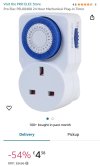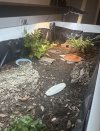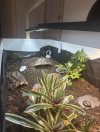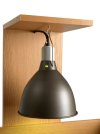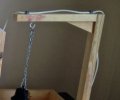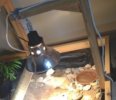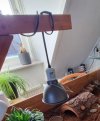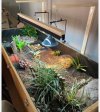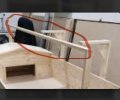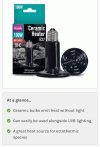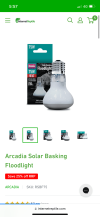I am a new tortoise owner taking care of my boyfriend’s russian tortoise while he is away. I have never cared for a reptile before and much of the information I have, I got online or from my boyfriend/his mom. I am not sure how old he is but I know my boyfriend has had him for 17 years. This morning he did not wake me up by moving around in his enclosure, as he usually does when his lights come on in the morning. I was not worried at first, but when I came back from running errands he was partially burrowed under his basking lamp. I took him out and soaked him in water for a little while, and he drank quite a bit. His eyes are shiny and have no mucus or crust. However, I noticed that his nose was runny. There was a snot bubble in one nostril, but he is not wheezing, squeaking, or breathing with his mouth. I am wondering if he may have gotten some dust or a small bit of substrate in his nose while he was burrowed?
He also seemed to be almost scratching at his face, which I have never seen him do before, however I think he is in the process of shedding.
He also keeps opening and closing his mouth, almost like he is biting the air in front of him. It does not seem like he is struggling to breathe.
There was a small piece of substrate that seemed to be stuck in his mouth that I carefully removed with sterilized tweezers, and that seemed to alleviate some of his discomfort, but soon after that he burrowed again, this time all the way underground.
I am terrified that he is ill. I cannot contact my boyfriend as he does not have cell service where he is. I know runny noses in tortoises can be a sign of an upper respiratory disease, and that more signs of this are lethargy and poor appetite.
I let him roam my backyard for awhile yesterday and gave him a pretty big salad of hostas, dandelion greens, mustard greens, and rose petals sprinkled with calcium powder. He ate most of it but it took him a lot longer than usual.
It is worth noting that I interact with him a great deal more than my boyfriend did, as he was at work all day 5 days a week and had gotten used to taking care of the tortoise without fawning over him nonstop. He very well could be stressed out from the change in environment from his house to my house, and with the increased level of activity. I also have 2 cats who don’t really bother him but who like to sit on his enclosure and watch him, whereas my boyfriend’s cat is terrified of him and leaves him alone.
Does it sound like he is ill? Should I take him to a vet? Or is he just stressed out from the various changes in his environment? Should I just leave him be? Please help!!
He also seemed to be almost scratching at his face, which I have never seen him do before, however I think he is in the process of shedding.
He also keeps opening and closing his mouth, almost like he is biting the air in front of him. It does not seem like he is struggling to breathe.
There was a small piece of substrate that seemed to be stuck in his mouth that I carefully removed with sterilized tweezers, and that seemed to alleviate some of his discomfort, but soon after that he burrowed again, this time all the way underground.
I am terrified that he is ill. I cannot contact my boyfriend as he does not have cell service where he is. I know runny noses in tortoises can be a sign of an upper respiratory disease, and that more signs of this are lethargy and poor appetite.
I let him roam my backyard for awhile yesterday and gave him a pretty big salad of hostas, dandelion greens, mustard greens, and rose petals sprinkled with calcium powder. He ate most of it but it took him a lot longer than usual.
It is worth noting that I interact with him a great deal more than my boyfriend did, as he was at work all day 5 days a week and had gotten used to taking care of the tortoise without fawning over him nonstop. He very well could be stressed out from the change in environment from his house to my house, and with the increased level of activity. I also have 2 cats who don’t really bother him but who like to sit on his enclosure and watch him, whereas my boyfriend’s cat is terrified of him and leaves him alone.
Does it sound like he is ill? Should I take him to a vet? Or is he just stressed out from the various changes in his environment? Should I just leave him be? Please help!!
Last edited:

